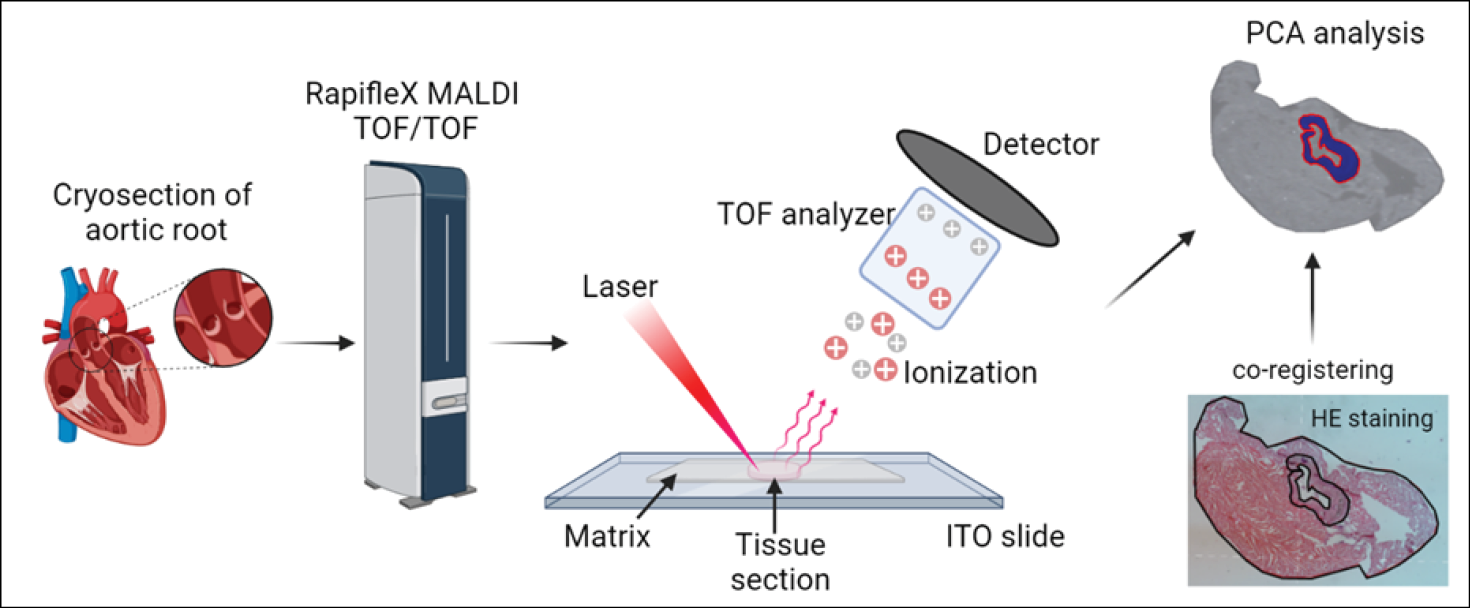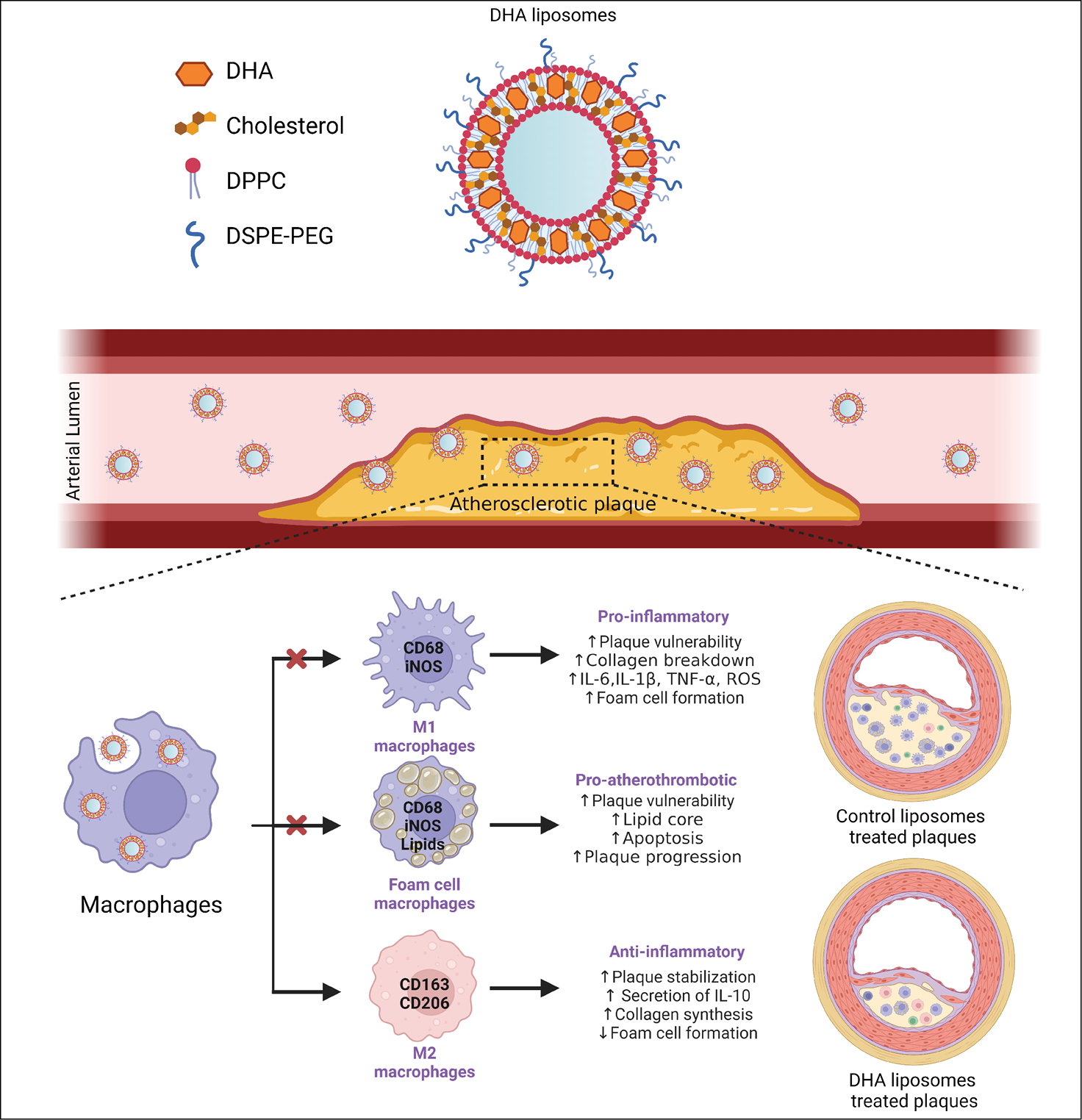
Issue 48
Nov 2023
SCIENCE OF LIFE

While Docosahexaenoic acid (DHA), an omega-3 fatty acid, could help to prevent the build-up of fatty deposits in arteries, traditional treatment methods such as oral consumption of DHA is often ineffective in treating atherosclerosis.
Atherosclerosis is a disease in which fat, cholesterol, and other substances build up inside artery walls. This can lead to plaque formation, which can block arteries and cause heart attacks and strokes. It is the leading cause of coronary heart disease, and is responsible for an estimated 17.9 million deaths in 2020.
In Singapore, 21 people die from heart disease and stroke every day, accounting for 32% of all deaths in 2021, making it the top disease burden in Singapore.

17.9 million
deaths in 2020
In Singapore,
21
people die from heart disease and stroke every day
Atherosclerosis: A silent killer, years in the making
Atherosclerosis is a chronic disease which takes years to develop, with no clinical symptoms manifested in the early stages. However, risk factors such as high blood cholesterol, high blood pressure and obesity can accelerate the progression of the disease. In patients with advanced-stage atherosclerosis, symptoms such as chest pain and breathlessness may be exhibited, indicating severe artery blockage.
Early interventions such as lifestyle modifications and medications to lower blood cholesterol are desirable and effective for most patients. DHA has been shown to have anti-inflammatory and antioxidant properties, which could help to prevent the build-up of fatty deposits in arteries—a major cause of heart attacks and strokes. DHA supplements are often consumed orally, but most are poorly absorbed by the gut.
Nanomedicine as a useful treatment tool
To improve the availability of DHA in the bloodstream, a research team led by Assistant Professor Wang Jiong-Wei from the Department of Surgery, the Nanomedicine Translational Research Programme, Centre for NanoMedicine and Cardiovascular Research Institute, at the Yong Loo Lin School of Medicine, National University of Singapore (NUS Medicine), and Professor Gerrit Storm from the Department of Surgery and Nanomedicine Translational Research Programme at NUS Medicine, worked on laboratory models to deliver DHA to the bloodstream that could be more effective than oral consumption—via DHA liposomes, a form of nanomedicine. This study is published in the Journal of Controlled Release.

An illustration of mass spectrometry imaging (MSI) on atherosclerotic plaques.

Graphical representation of the treatment process.
DHA liposomes are small vesicles made up of phospholipids, a major membrane lipid which acts as a barrier to protect the cell against various adverse environmental conditions. The liposomes can help to reduce the size of plaques and the amount of inflammation in arteries. When delivered into the blood stream, DHA liposomes accumulate in the plaques on the arterial walls.
The research team found that macrophages, a type of white blood cell, absorb the DHA liposomes, resulting in reduced inflammation and increased healing of the atherosclerotic plaques. These liposomes also help reduce the amount of lipids in the build-up and prevent its rupture.
The liposomes can help to reduce the size of plaques and the amount of inflammation in arteries. When delivered into the blood stream, DHA liposomes accumulate in the plaques on the arterial walls.
In collaboration with Associate Professor Glenn Bonney, Senior Consultant, Division of Hepatobiliary & Pancreatic Surgery, and Director of Research, Department of Surgery, National University Hospital, the researchers employed a state-of-the-art mass spectrometry imaging technology termed rapifleX, to analyse the plaque. It revealed that DHA liposomes can restore the lipid balance in the artery to that of healthy arteries in which less harmful lipids are present. These results suggest that DHA liposomes could be a promising new treatment for atherosclerosis.
“This is the first study to demonstrate that an injectable nanoformulation can remarkably improve the therapeutic effects of DHA against atherosclerosis at a dose of 40,000 to 400,000 times lower than reported usage of oral DHA. We are optimistic about the clinical benefits it may bring to our patients, and are exploring clinical trials on patients in the near future,” said A/Prof Wang.

From left: The research team, comprising Assistant Professor Wang Jiong-Wei from the Department of Surgery, the Nanomedicine Translational Research Programme, Centre for NanoMedicine and Cardiovascular Research Institute at NUS Medicine; Associate Professor Glenn Kunnath Bonney from the Department of Surgery at the National University Hospital and the Director & Principal Investigator of SurgiCAL ProtEomics Laboratory (SCALPEL), iHealthtech, NUS; Professor Gerrit Storm from the Department of Surgery and Nanomedicine Translational Research Programme at NUS Medicine; Ms Chong Suet Yen, PhD student at the Department of Surgery and Cardiovascular Research Institute at NUS Medicine; and Dr Looi Wen Donq, Application Specialist at Bruker Daltonics.
Behind: rapifleX, the technology which performs mass spectrometry imaging (MSI) on atherosclerosis plaques, allowing for the visualization of different types of lipids on the plaques.
Click here to read the journal article.
More from this issue

ALL IN THE FAMILY
The Patient as Safety Partnet

THE LAST MILE
Remembrances

